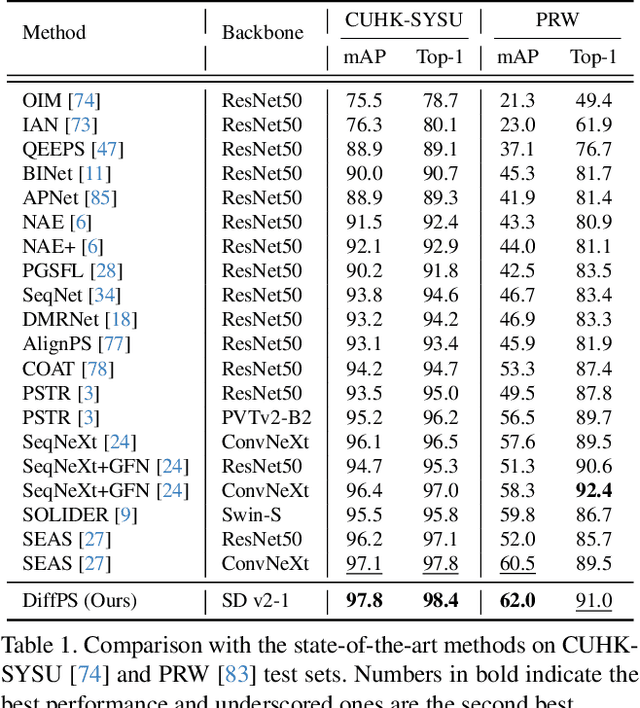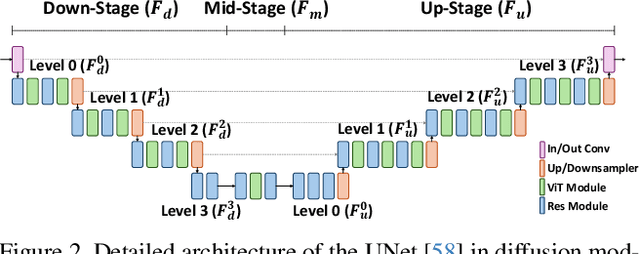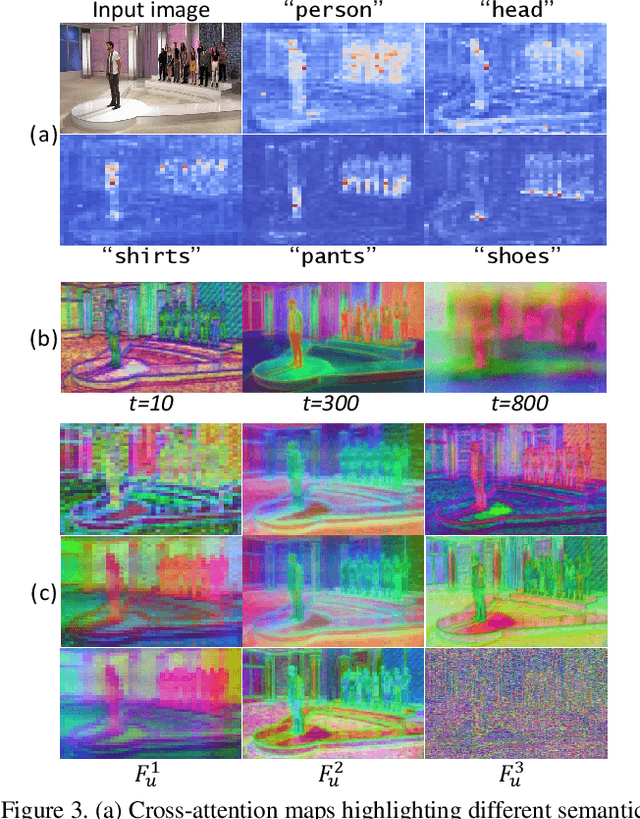Object Detection
Object detection is a computer vision task in which the goal is to detect and locate objects of interest in an image or video. The task involves identifying the position and boundaries of objects in an image, and classifying the objects into different categories. It forms a crucial part of vision recognition, alongside image classification and retrieval.
Papers and Code
Detection of Chagas Disease from the ECG: The George B. Moody PhysioNet Challenge 2025
Oct 02, 2025Objective: Chagas disease is a parasitic infection that is endemic to South America, Central America, and, more recently, the U.S., primarily transmitted by insects. Chronic Chagas disease can cause cardiovascular diseases and digestive problems. Serological testing capacities for Chagas disease are limited, but Chagas cardiomyopathy often manifests in ECGs, providing an opportunity to prioritize patients for testing and treatment. Approach: The George B. Moody PhysioNet Challenge 2025 invites teams to develop algorithmic approaches for identifying Chagas disease from electrocardiograms (ECGs). Main results: This Challenge provides multiple innovations. First, we leveraged several datasets with labels from patient reports and serological testing, provided a large dataset with weak labels and smaller datasets with strong labels. Second, we augmented the data to support model robustness and generalizability to unseen data sources. Third, we applied an evaluation metric that captured the local serological testing capacity for Chagas disease to frame the machine learning problem as a triage task. Significance: Over 630 participants from 111 teams submitted over 1300 entries during the Challenge, representing diverse approaches from academia and industry worldwide.
MMDEW: Multipurpose Multiclass Density Estimation in the Wild
Oct 02, 2025Density map estimation can be used to estimate object counts in dense and occluded scenes where discrete counting-by-detection methods fail. We propose a multicategory counting framework that leverages a Twins pyramid vision-transformer backbone and a specialised multi-class counting head built on a state-of-the-art multiscale decoding approach. A two-task design adds a segmentation-based Category Focus Module, suppressing inter-category cross-talk at training time. Training and evaluation on the VisDrone and iSAID benchmarks demonstrates superior performance versus prior multicategory crowd-counting approaches (33%, 43% and 64% reduction to MAE), and the comparison with YOLOv11 underscores the necessity of crowd counting methods in dense scenes. The method's regional loss opens up multi-class crowd counting to new domains, demonstrated through the application to a biodiversity monitoring dataset, highlighting its capacity to inform conservation efforts and enable scalable ecological insights.
Rate-Distortion Optimized Communication for Collaborative Perception
Sep 26, 2025



Collaborative perception emphasizes enhancing environmental understanding by enabling multiple agents to share visual information with limited bandwidth resources. While prior work has explored the empirical trade-off between task performance and communication volume, a significant gap remains in the theoretical foundation. To fill this gap, we draw on information theory and introduce a pragmatic rate-distortion theory for multi-agent collaboration, specifically formulated to analyze performance-communication trade-off in goal-oriented multi-agent systems. This theory concretizes two key conditions for designing optimal communication strategies: supplying pragmatically relevant information and transmitting redundancy-less messages. Guided by these two conditions, we propose RDcomm, a communication-efficient collaborative perception framework that introduces two key innovations: i) task entropy discrete coding, which assigns features with task-relevant codeword-lengths to maximize the efficiency in supplying pragmatic information; ii) mutual-information-driven message selection, which utilizes mutual information neural estimation to approach the optimal redundancy-less condition. Experiments on 3D object detection and BEV segmentation demonstrate that RDcomm achieves state-of-the-art accuracy on DAIR-V2X and OPV2V, while reducing communication volume by up to 108 times. The code will be released.
$γ$-Quant: Towards Learnable Quantization for Low-bit Pattern Recognition
Sep 26, 2025Most pattern recognition models are developed on pre-proce\-ssed data. In computer vision, for instance, RGB images processed through image signal processing (ISP) pipelines designed to cater to human perception are the most frequent input to image analysis networks. However, many modern vision tasks operate without a human in the loop, raising the question of whether such pre-processing is optimal for automated analysis. Similarly, human activity recognition (HAR) on body-worn sensor data commonly takes normalized floating-point data arising from a high-bit analog-to-digital converter (ADC) as an input, despite such an approach being highly inefficient in terms of data transmission, significantly affecting the battery life of wearable devices. In this work, we target low-bandwidth and energy-constrained settings where sensors are limited to low-bit-depth capture. We propose $\gamma$-Quant, i.e.~the task-specific learning of a non-linear quantization for pattern recognition. We exemplify our approach on raw-image object detection as well as HAR of wearable data, and demonstrate that raw data with a learnable quantization using as few as 4-bits can perform on par with the use of raw 12-bit data. All code to reproduce our experiments is publicly available via https://github.com/Mishalfatima/Gamma-Quant
Leveraging Prior Knowledge of Diffusion Model for Person Search
Oct 02, 2025



Person search aims to jointly perform person detection and re-identification by localizing and identifying a query person within a gallery of uncropped scene images. Existing methods predominantly utilize ImageNet pre-trained backbones, which may be suboptimal for capturing the complex spatial context and fine-grained identity cues necessary for person search. Moreover, they rely on a shared backbone feature for both person detection and re-identification, leading to suboptimal features due to conflicting optimization objectives. In this paper, we propose DiffPS (Diffusion Prior Knowledge for Person Search), a novel framework that leverages a pre-trained diffusion model while eliminating the optimization conflict between two sub-tasks. We analyze key properties of diffusion priors and propose three specialized modules: (i) Diffusion-Guided Region Proposal Network (DGRPN) for enhanced person localization, (ii) Multi-Scale Frequency Refinement Network (MSFRN) to mitigate shape bias, and (iii) Semantic-Adaptive Feature Aggregation Network (SFAN) to leverage text-aligned diffusion features. DiffPS sets a new state-of-the-art on CUHK-SYSU and PRW.
Learnable Conformal Prediction with Context-Aware Nonconformity Functions for Robotic Planning and Perception
Sep 26, 2025Deep learning models in robotics often output point estimates with poorly calibrated confidences, offering no native mechanism to quantify predictive reliability under novel, noisy, or out-of-distribution inputs. Conformal prediction (CP) addresses this gap by providing distribution-free coverage guarantees, yet its reliance on fixed nonconformity scores ignores context and can yield intervals that are overly conservative or unsafe. We address this with Learnable Conformal Prediction (LCP), which replaces fixed scores with a lightweight neural function that leverages geometric, semantic, and task-specific features to produce context-aware uncertainty sets. LCP maintains CP's theoretical guarantees while reducing prediction set sizes by 18% in classification, tightening detection intervals by 52%, and improving path planning safety from 72% to 91% success with minimal overhead. Across three robotic tasks on seven benchmarks, LCP consistently outperforms Standard CP and ensemble baselines. In classification on CIFAR-100 and ImageNet, it achieves smaller set sizes (4.7-9.9% reduction) at target coverage. For object detection on COCO, BDD100K, and Cityscapes, it produces 46-54% tighter bounding boxes. In path planning through cluttered environments, it improves success to 91.5% with only 4.5% path inflation, compared to 12.2% for Standard CP. The method is lightweight (approximately 4.8% runtime overhead, 42 KB memory) and supports online adaptation, making it well suited to resource-constrained autonomous systems. Hardware evaluation shows LCP adds less than 1% memory and 15.9% inference overhead, yet sustains 39 FPS on detection tasks while being 7.4 times more energy-efficient than ensembles.
Unlocking Vision-Language Models for Video Anomaly Detection via Fine-Grained Prompting
Oct 02, 2025Prompting has emerged as a practical way to adapt frozen vision-language models (VLMs) for video anomaly detection (VAD). Yet, existing prompts are often overly abstract, overlooking the fine-grained human-object interactions or action semantics that define complex anomalies in surveillance videos. We propose ASK-Hint, a structured prompting framework that leverages action-centric knowledge to elicit more accurate and interpretable reasoning from frozen VLMs. Our approach organizes prompts into semantically coherent groups (e.g. violence, property crimes, public safety) and formulates fine-grained guiding questions that align model predictions with discriminative visual cues. Extensive experiments on UCF-Crime and XD-Violence show that ASK-Hint consistently improves AUC over prior baselines, achieving state-of-the-art performance compared to both fine-tuned and training-free methods. Beyond accuracy, our framework provides interpretable reasoning traces towards anomaly and demonstrates strong generalization across datasets and VLM backbones. These results highlight the critical role of prompt granularity and establish ASK-Hint as a new training-free and generalizable solution for explainable video anomaly detection.
The Missing Piece: A Case for Pre-Training in 3D Medical Object Detection
Sep 19, 2025Large-scale pre-training holds the promise to advance 3D medical object detection, a crucial component of accurate computer-aided diagnosis. Yet, it remains underexplored compared to segmentation, where pre-training has already demonstrated significant benefits. Existing pre-training approaches for 3D object detection rely on 2D medical data or natural image pre-training, failing to fully leverage 3D volumetric information. In this work, we present the first systematic study of how existing pre-training methods can be integrated into state-of-the-art detection architectures, covering both CNNs and Transformers. Our results show that pre-training consistently improves detection performance across various tasks and datasets. Notably, reconstruction-based self-supervised pre-training outperforms supervised pre-training, while contrastive pre-training provides no clear benefit for 3D medical object detection. Our code is publicly available at: https://github.com/MIC-DKFZ/nnDetection-finetuning.
* MICCAI 2025
Joint Optimization of Speaker and Spoof Detectors for Spoofing-Robust Automatic Speaker Verification
Oct 02, 2025Spoofing-robust speaker verification (SASV) combines the tasks of speaker and spoof detection to authenticate speakers under adversarial settings. Many SASV systems rely on fusion of speaker and spoof cues at embedding, score or decision levels, based on independently trained subsystems. In this study, we respect similar modularity of the two subsystems, by integrating their outputs using trainable back-end classifiers. In particular, we explore various approaches for directly optimizing the back-end for the recently-proposed SASV performance metric (a-DCF) as a training objective. Our experiments on the ASVspoof 5 dataset demonstrate two important findings: (i) nonlinear score fusion consistently improves a-DCF over linear fusion, and (ii) the combination of weighted cosine scoring for speaker detection with SSL-AASIST for spoof detection achieves state-of-the-art performance, reducing min a-DCF to 0.196 and SPF-EER to 7.6%. These contributions highlight the importance of modular design, calibrated integration, and task-aligned optimization for advancing robust and interpretable SASV systems.
The Average Patient Fallacy
Sep 30, 2025
Machine learning in medicine is typically optimized for population averages. This frequency weighted training privileges common presentations and marginalizes rare yet clinically critical cases, a bias we call the average patient fallacy. In mixture models, gradients from rare cases are suppressed by prevalence, creating a direct conflict with precision medicine. Clinical vignettes in oncology, cardiology, and ophthalmology show how this yields missed rare responders, delayed recognition of atypical emergencies, and underperformance on vision-threatening variants. We propose operational fixes: Rare Case Performance Gap, Rare Case Calibration Error, a prevalence utility definition of rarity, and clinically weighted objectives that surface ethical priorities. Weight selection should follow structured deliberation. AI in medicine must detect exceptional cases because of their significance.
 Add to Chrome
Add to Chrome Add to Firefox
Add to Firefox Add to Edge
Add to Edge